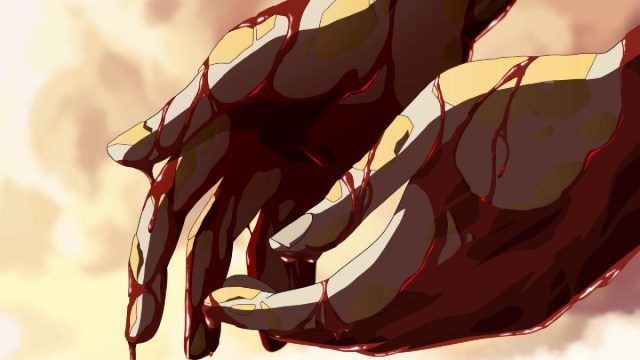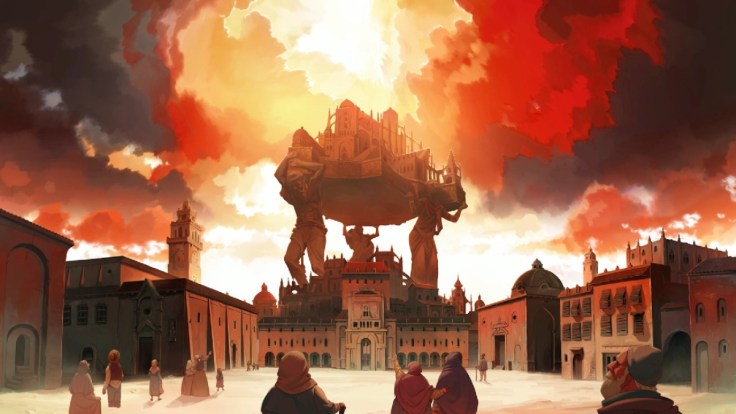Blasphemous 2 Review | Repentance is Radical
A sequel born of sin and sacrifice.

As a big fan of the Metroidvania genre, the 2019 debut of Blasphemous left me pleasantly surprised and yearning for more of its disturbing, beautiful world. Though it seemed to lean more into its combat-focused approach and less on the backtracking tropes the genre is known for, I couldn’t get enough of its intoxicating art direction and unforgiving combat. After four years since its predecessor’s release, Blasphemous 2 has descended from the heavens, strapping us back into the guilt-stricken shoes of the Penitent One. But does the sequel improve on the shortcomings of what came before it?
It’s safe to say that salvation has arrived.
Guilty as Charged
Once again, dawning the absurdly pointy helmet of the Penitent One, Blasphemous 2 thrusts you back into the world of Cvstodia and picks up right where the Wounds of Eventide DLC left off. While the world heralds the return of the Miracle, our protagonist is tasked with preventing the birth of a new miracle child through countless bouts of pain, torment, and sacrifice.

And that’s about as far as I can describe the story of Blasphemous 2 as, much like its predecessor, its lore and plotlines are mostly hidden within cryptic item descriptions and ambiguous conversations between its many unique NPCs. That’s not to take away from the game’s story, as I’m sure it’s lovely, but I can only pretend to follow along while glazing over Old English terminology for so long. Blasphemous 2 sets out to be a tightly packed and dense Metroidvania. For interested players, the story is just a cherry on top.
Sinners and Saints
Blasphemous 2 introduces several new elements of both combat and traversal with the three unique weapons the Penitent One will acquire throughout his travels; the ‘Ruego Al Alba,’ a one-handed blade closely resembling the Mea Culpa from the previous game; the ‘Veredicto’, a massive flail capable of heavy damage and fire attacks; and ‘Sarmiento and Centella’, a unique sword and dagger pair infused with lightning-fast attacks.

In addition to boasting their own unique move sets and upgradable skill trees, the three weapons provide the Penitent One with new methods of navigating throughout the world of Cvstodia. Slamming the ground with Ruego Al Alba emits blood waves that can destroy “living” walls and doors—poking mirrored statues with Sarmiento and Centella cause the Penitent One to blink and phase through various obstacles. The Veredicto can be swung at large bells that pulsate sound waves, causing platforms to solidify temporarily.
While you can instantly cycle between the three weapons on the fly, you likely won’t be doing that in the middle of combat. Instead, you’ll be conquering the now-accessible platforming puzzles that begin to open up as the Penitent One unlocks new abilities like air-dashing and double-jumping.
“Blasphemous 2 does a lot of things right, but its atmospheric, mesmerizing world is downright divine.”
While the combat is just as visceral as ever, the enemy variety starts to suffer the further you progress through the world. Each new zone seems to introduce a couple of new enemies upon entering but never really deviates as you dive further into them, aside from recoloring enemies you’ve seen before with slight variations in move sets. Ultimately, most enemies in the game can be bested by sliding through them and wailing at their flanks.
Blasphemous 2’s combat shines the brightest during boss battles, showcasing unsettling monstrosities with Bloodborne-esque naming conventions. While not always as tricky as I’d hoped, these fights were easily my favorite and most memorable moments in the game.

Of course, the enemies scattered throughout Cvstodia would hold little significance were it not for the meticulously crafted settings surrounding them. Blasphemous 2 does many things right, but its atmospheric, mesmerizing world is downright divine.
Pixels and Piety
The folks over at The Game Kitchen have crafted yet another gorgeous world, drenched in religious Spanish influence and highlighted with macabre and gothic flair. In typical Metroidvania fashion, the sprawling map invites exploration in every which way, leading you through its variety of memorable destinations while often teasing you with slightly out-of-reach items and alternate pathways. While the first few zones may not be as noteworthy as I’d have liked, most of the game’s uniquely designed areas left favorable impressions that I won’t forget anytime soon.

What may be my personal favorite element of Blasphemous 2’s world-building is its hauntingly beautiful score, composed of an assortment of gothic orchestral movements followed by its upbeat Spanish guitar licks and unsettling atmospheric underscores. Many tracks become instant earworms upon entering their respective zones, making initial exploration and subsequent backtracking trips throughout them that much more enjoyable. I cannot stress just how much of a banger Corona de Siete Azahares is, but the entire soundtrack is a testament to Carlos Viola’s dedication to crafting a slice of sonic excellence.
On top of its enchanting soundscapes and stellar audio design, Blasphemous 2 sails on its flawless technical performance. I never encountered any bugs in my playthrough, which is much more than I can say about my experience playing the first entry on my Nintendo Switch in 2019. Instead, its smooth and spotless performance allowed me to enjoy a complete journey without unwanted hiccups.
The Final Judgement

Blasphemous 2 understands what made its first entry tremendous and improves on a successful formula. Innovating just enough on its previous combat elements while adding a larger, more deserving portion of Metroidvania love, it’s a dish that The Game Kitchen should be proud to serve.
It may not be the best in the genre, but it’s a damn good one and is an experience both newcomers and veterans will thoroughly enjoy.

Blasphemous 2
A satisfying return to the alluring world of Cvstodia, Blasphemous 2 improves on nearly everything that made its predecessor special.
Pros
- Gorgeously pixelated art style
- A captivating and emotional soundtrack
- Tight, fluid controls for platforming
Cons
- Combat can sometimes be sluggish
- Repetitive and predictable enemies
- Story demands a lot to fully grasp
A copy of this game was provided by the publisher for review. Reviewed on PC.
